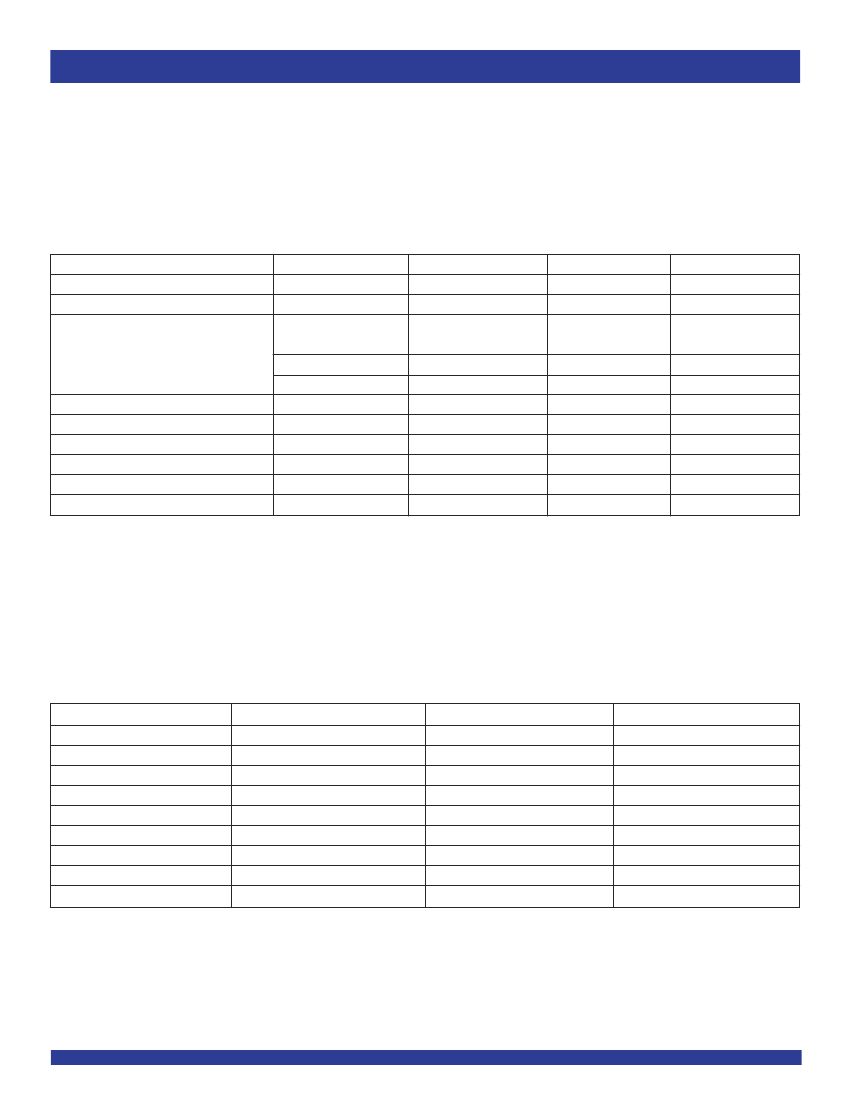鈥?/div>
t
U
= 1.56ns
t
U
= 1.25ns
t
U
= 0.78ns
ns
Phase Degrees
% of Cycle Time
1/(44 x F
NOM
)
15 to 35MHz
FS = MID
1/(26 x F
NOM
)
25 to 60MHz
FS = HIGH
1/(16 x F
NOM
)
40 to 100MHz
Comments
NOTES:
1. The device may be operated outside recommended frequency ranges without damage, but functional operation is not guaranteed. Selecting the appropriate FS value based on
input frequency range allows the PLL to operate in its 鈥榮weet spot鈥?where jitter is lowest.
2. The level to be set on FS is determined by the nominal operating frequency of the VCO and Time Unit Generator. The VCO frequency always appears at 1Q
1:0
, 2Q
1:0
, and the
higher outputs when they are operated in their undivided modes. The frequency appearing at the REF and FB inputs will be the same as the VCO when the output connected
to FB is undivided. The frequency of the REF and FB inputs will be 1/2 or 1/4 the VCO frequency when the part is configured for a frequency multiplication by using a divided
output as the FB input.
3. Skew adjustment range assumes that a zero skew output is used for feedback. If a skewed Q output is used for feedback, then adjustment range will be greater. For example
if a 4t
U
skewed output is used for feedback, all other outputs will be skewed 鈥?t
U
in addition to whatever skew value is programmed for those outputs. 鈥楳ax adjustment鈥?range
applies to output pairs 3 and 4 where 卤 6t
U
skew adjustment is possible and at the lowest F
NOM
value.
CONTROL SUMMARY TABLE FOR FEEDBACK SIGNALS
nF1:0
LL
(1)
LM
LH
ML
MM
MH
HL
HM
HH
Skew (Pair #1, #2)
鈥?t
U
鈥?t
U
鈥?t
U
鈥?t
U
Zero Skew
1t
U
2t
U
3t
U
4t
U
Skew (Pair #3)
Divide by 2
鈥?t
U
鈥?t
U
鈥?t
U
Zero Skew
2t
U
4t
U
6t
U
Divide by 4
Skew (Pair #4)
Divide by 2
鈥?t
U
鈥?t
U
鈥?t
U
Zero Skew
2t
U
4t
U
6t
U
Inverted
(2)
NOTES:
1. LL disables outputs if TEST = MID and GND/sOE = HIGH.
2. When pair #4 is set to HH (inverted), GND/sOE disables pair #4 HIGH when V
CCQ
/PE = HIGH, GND/sOE disables pair #4 LOW when V
CCQ
/PE = LOW.
3
